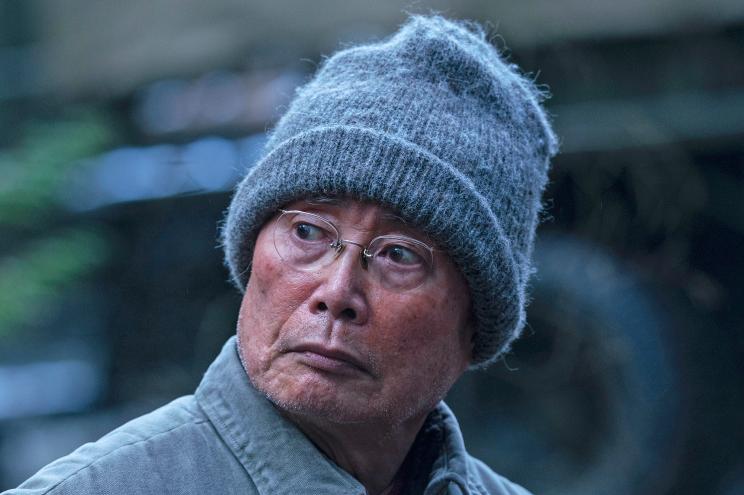When George Takei was put in a Japanese internment camp between the ages of 5 and 8, he initially thought it was fun.
“It was a few weeks after my fifth birthday [in 1942]. It’s a morning I can never forget,” says Takei, 82. “The soldiers came and took us away from our two-bedroom home on Garnet Street in Los Angeles to a horse stable at Santa Anita race track that was still pungent with the stink of manure.
“For my parents, it was a degrading experience. For me as a 5-year-old, I thought it was fun to sleep where the horses sleep. So there’s a parallel story — a child experiencing new things and my parents having everything they’d worked for unjustly taken.”
The internment of Japanese Americans following the Japanese attack on Pearl Harbor in 1941 is the subject of AMC’s “The Terror: Infamy,” premiering Monday at 9 p.m.
Season 1 of the historical horror anthology series (which was only called “The Terror”) starred Jared Harris (“Chernobyl”) and followed an 1845 naval expedition beset by supernatural forces in the Arctic.
Season 2 — named “The Terror: Infamy” because FDR called Dec. 7 “the day of infamy” — is set in WWII era California. It isn’t based on Takei’s exact experience, but his insight informed the creators.
“It’s epic. Ten episodes, 10 hours, told over a 10-week period,” says the “Star Trek” actor, who appears in the show and also served as a consultant. “Never has this been done on this story of the Japanese-American imprisonment. That gives us more time to examine that historic chapter in detail.”
‘I remember saying, ‘Daddy, why did you lead us like sheep to slaughter into the camp?’ ‘
“The Terror: Infamy” follows Chester Nakayama (Derek Mio, “Greek”), a Japanese American man who begins experiencing supernatural horrors as his family experiences the real terrors of forced relocation and detainment. Showrunner Alexander Woo, 47 (“True Blood”), says marrying real-life history to fictional horror is the best way to convey it.
“It’s an effective way to build empathy for the characters,” he says. “Hopefully you feel so connected to Chester and his parents that it’s easy to be part of their lives and go on this journey with them. Often there’s a danger when you’re doing a period piece that you feel at a remove because it was 75 years ago — ‘It couldn’t possibly have any relevance to me!’ ”
Of course, it’s all too relevant to Takei. He says being on the show’s set in Canada was an emotional experience that brought him back to the camp in the swamps of Arkansas (where his family was moved after the horse stalls).
“I’m still shocked today when I’m in conversation with people I consider well-informed and they ask about my childhood imprisonment, and they’re shocked,” he says. “I’m shocked that they’re shocked. I thought Americans knew this part of American history. So this is part of our mission [with the show], to raise awareness.
“I was an idealistic teenager, and I remember saying, ‘Daddy, why did you lead us like sheep to slaughter into the camp?’ I regret having said that now. It still haunts me. My father said, ‘This is a people’s democracy — people can do great things, but it’s dependent on people who cherish those ideals’ . . . that’s what led me to become an activist.
“And this project is a part of that.”
“The Terror: Infamy” Series premiere Monday, 9 p.m., AMC
